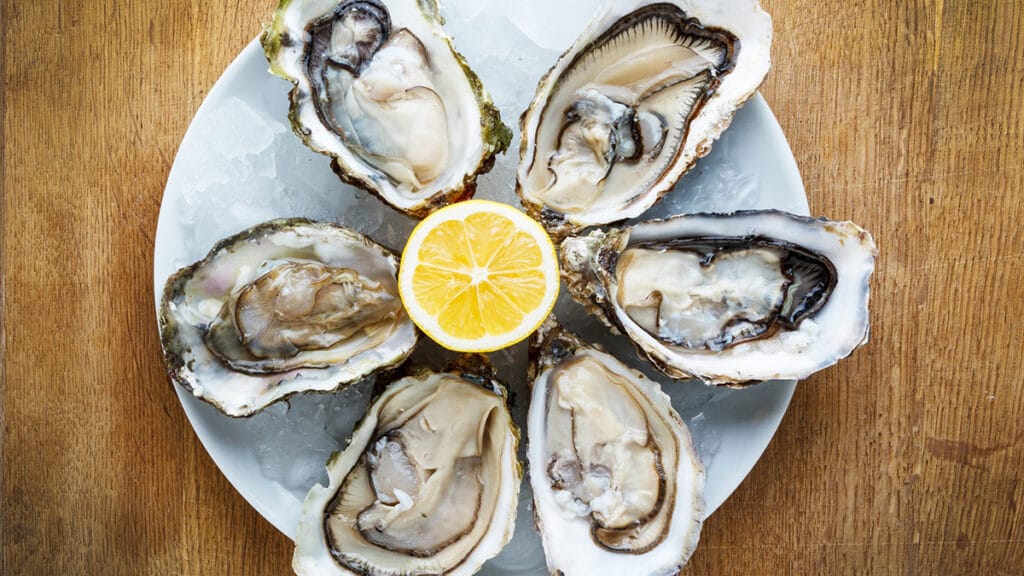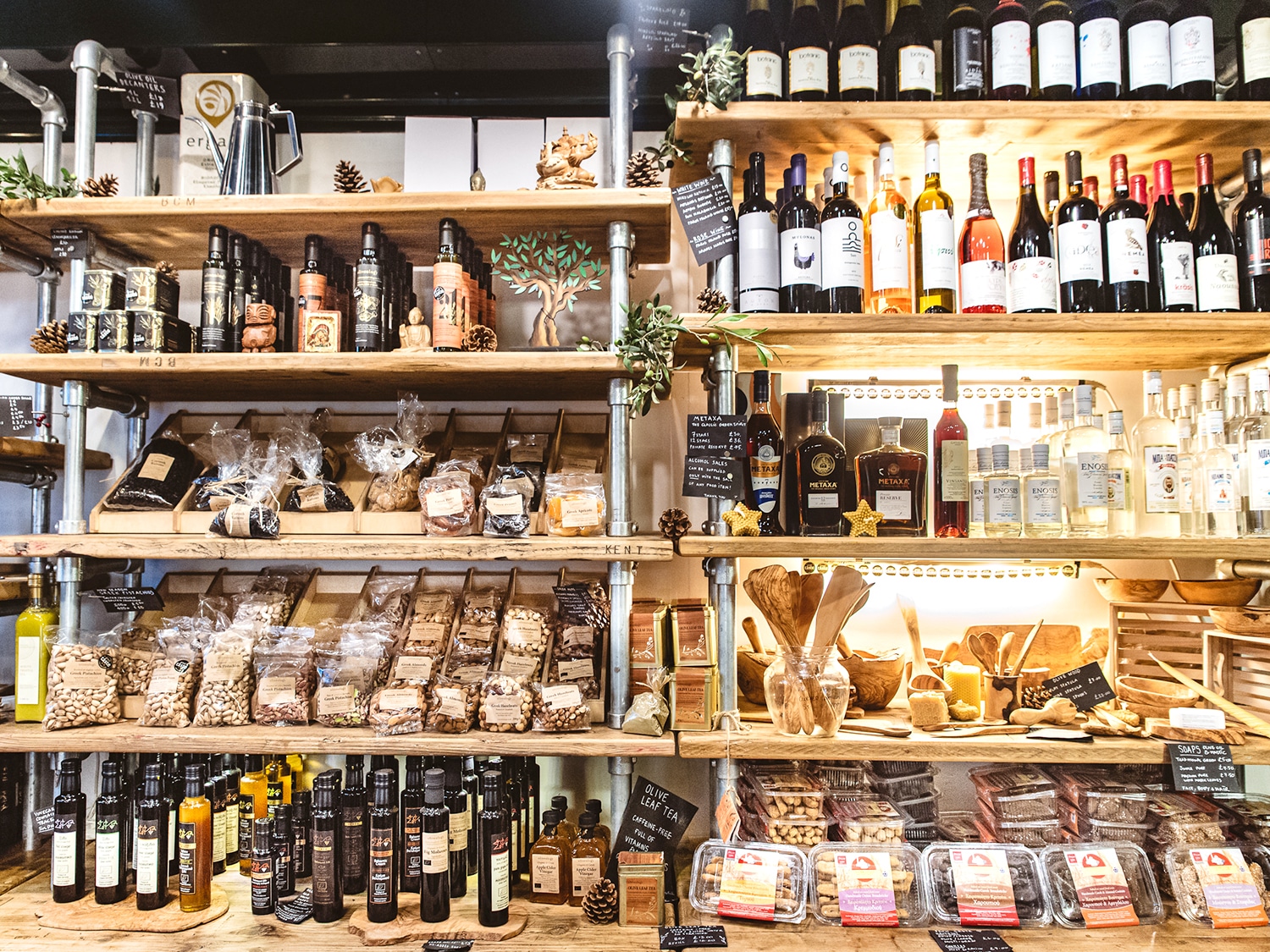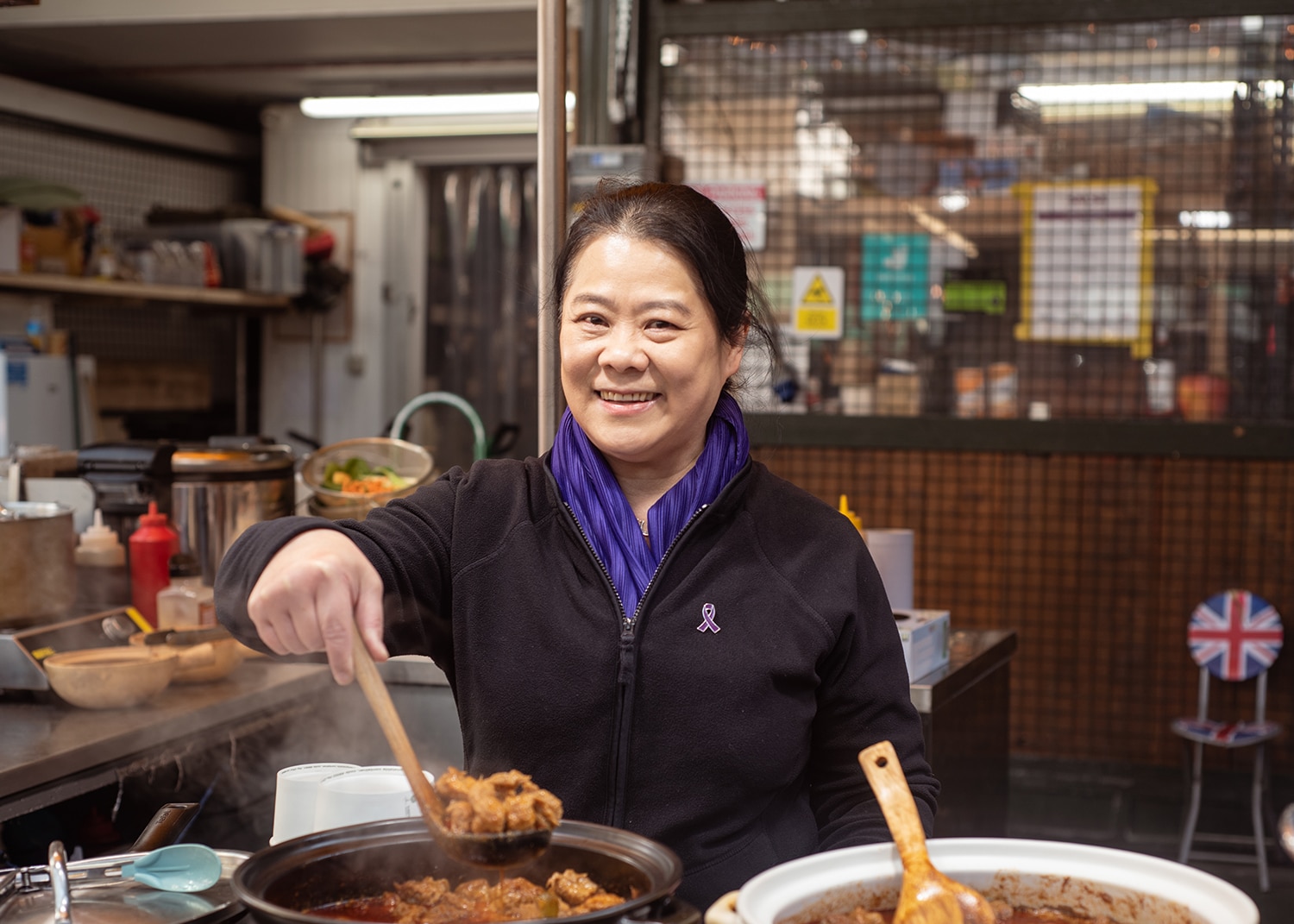Food of love
An eyebrow-raising guide to the Borough Market foods that have, at different junctures in world history, been considered to have aphrodisiac qualities


“ACCORDING TO WILLIAM SALMON, WRITING IN 1710, POTATOES ARE ‘SPERMATOGENETICK’ VEGETABLES WHICH ‘PROVOKE LUST’”
Words: Mark Riddaway
Southwark resident and likely Borough Market shopper William Shakespeare once suggested that music might be the food of love, but real food of love is, well, food. Since time immemorial, people have been eating and drinking in the service of courtship and romance. Many of the ingredients sold by the Market’s traders have at various points in history, in different parts of the world, been perceived as having romantic or aphrodisiac qualities – some of which are quite surprising. Here’s a Borough shopping list for anyone with loving on their mind.
Chocolate
Ever since chocolate first arrived in Europe in the early 16th century, brought back from Mexico by Spanish conquistadores, it has carried about itself a hint of carnality. It started with ribald tales of the Aztec emperor Montezuma downing gallons of drinking chocolate before entertaining his hundreds of wives and concubines; stories which fired the imagination of repressed Europeans. By the 17th century the drinking of hot chocolate was a widespread and rather fashionable pursuit, especially among women, but that sense of naughtiness never went away: Casanova spends a large proportion of his memoirs “taking chocolate” and trying to persuade women to take chocolate with him. The first chocolate bar went on sale in 1847, with boxes of candied chocolates in production by the 1860s. These were quickly assimilated into the rituals of courtship and have remained so ever since.
Potatoes
In The Merry Wives of Windsor, Falstaff, dressed as a stag and massively over-excited at the prospect of having his way with the comely Mistress Ford, cries out: “Let the sky rain potatoes.” To a modern audience, that’s just confusing. But to an Elizabethan audience, it would have made perfect sense. Potatoes, now the most mundane and everyday of vegetables, were for a while the essence of risqué exotica. According to William Salmon, in his 1710 Botanologia; or the English Herbal, potatoes are “spermatogenetick” vegetables which “restore in consumptions, and provoke lust”. It’s fair to say that they’re considered somewhat less sexy these days.
Turnips
Surely the least-likely aphrodisiac in the world – more so even than potatoes. According to Pliny the Elder, there was some debate about the true nature of the turnip: “Democritus entirely disapproved of the turnip as a food on the ground that it causes flatulence,” he wrote. “Diocles, however, praised it highly, maintaining that it is also an aphrodisiac. Dionysius agrees, holding that its effect is greater when it is seasoned with rocket.” Taking into account what we’ve just learnt about potatoes, this puts the Scottish penchant for tatties and neeps in an entirely new light.
Onions
Definitely the nuclear option among food-based aphrodisiacs, particularly when consumed by men. The first century Roman poet Martial summed it up nicely in one of his typically lewd epigrams: “If your wife is old / And your member is exhausted / Eat onions in plenty.” The decidedly filthy 15th century Arabic sex manual The Perfumed Garden by Muhammad al-Nafzawi is filled to the brim with onion recipes and contains a poem that begins: “The member of Abou el Heiloukh has remained erect / For 30 days without a break / because he did eat onions.” In France, this apparent quality is still put to good use: newly-weds have traditionally been served onion soup the day after the wedding in an attempt to reinvigorate their ardour.
Asparagus
Some foods have been ascribed with aphrodisiac qualities thanks largely to looking a little, well, phallic. This is true of celery and carrots, and especially of asparagus. According to the English botanist Nicholas Culpeper, in his Complete Herbal of 1653, asparagus, when boiled up in wine and eaten in the morning, “stirreth up bodily lust in man or woman, whatever some have written to the contrary”. This belief, which dates back to antiquity, reached the Arab world as well. Back to The Perfumed Garden: “He who boils asparagus, and then fries them in fat, and then pours upon them the yolks of eggs with pounded condiments and eats every day of this dish, will… find in it a stimulant for his amorous desires.”
Oysters
A further subset of aphrodisiac foods contains those we can politely call ‘yonic’ – the female equivalent of phallic. Oysters have plenty of that going on, as well as being saline, slippery and impossible to eat in a dignified manner. They have been associated with love and sex since antiquity, as illustrated by these words from Juvenal about the love goddess Venus: “Does Venus care about anything when she’s drunk? / She no longer knows the difference between head and tail, / She who laps at giant oysters, long, long after midnight.”
Casanova, who had a similar penchant for food and romance, ate a staggering quantity of oysters with two young women, Emilie and Armelline: “We ate 50 oysters, and drank two bottles of sparkling champagne, which made my two guests eruct and blush and laugh at the same time.” They ate a further 50 “for dessert”, accompanied by a rum punch, spicing things up by sucking oysters from between each other’s lips. The polar opposite of Casanova was Nehemiah Wallington, a 17th century Puritan from London, who attempted to dampen his lustful inclinations by abstaining from “eggs and oysters and wine and many other things which I loved very well”.
Bay leaves
A correspondent to the Connoisseur journal in 1755 provides a lovely description of an old British Valentine’s Day tradition: “Last Friday was Valentine’s Day, and, the night before, I got five bay leaves and pinned four of them to the four corners of my pillow and the fifth to the middle; and then if I dreamt of my sweetheart, Betty said we should be married before the year was out.” She goes on to explain how she made absolutely sure of success: “I boiled an egg hard, and took out the yolk, and filled it with salt; and then I went to bed, ate it shell and all, without speaking or drinking after it.” Delicious.
Basil
With its heart-shaped leaves and sweet scent, basil is a symbol of love in several European countries. In Romania, on the day before the feast of boboteaza (epiphany), there is a similar tradition to the English bay leaf one, with sprigs of basil being left under the pillow to inspire a future marriage. One of the colloquial names for basil in Tuscany is amorino, meaning ‘little love’, and in Italy these fragrant leaves have been used in a number of romantic traditions. Or, at times, not so romantic: in some parts of Italy the presence of a pot of basil on a balcony was meant to symbolise that the owners had a daughter of marriageable age under their roof and that they would happily listen to offers from suitors.
Wine / beer / spirits
Absolutely no evidence needed for this. In the immortal words of American poet Ogden Nash: “Candy / Is dandy / But liquor / Is quicker.” Wine has provided the petrol in the engine of romance since the first time some slightly off grape juice was shared by an increasingly giggly couple long before the invention of writing. Still the only aphrodisiac that actually works, hence the fact that single people go to parties with bags of bottles, not barrels of oysters.
Mark Riddaway is the author of Borough Market: Edible Histories, a book filled with epic tales of everyday ingredients.


